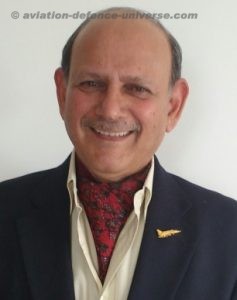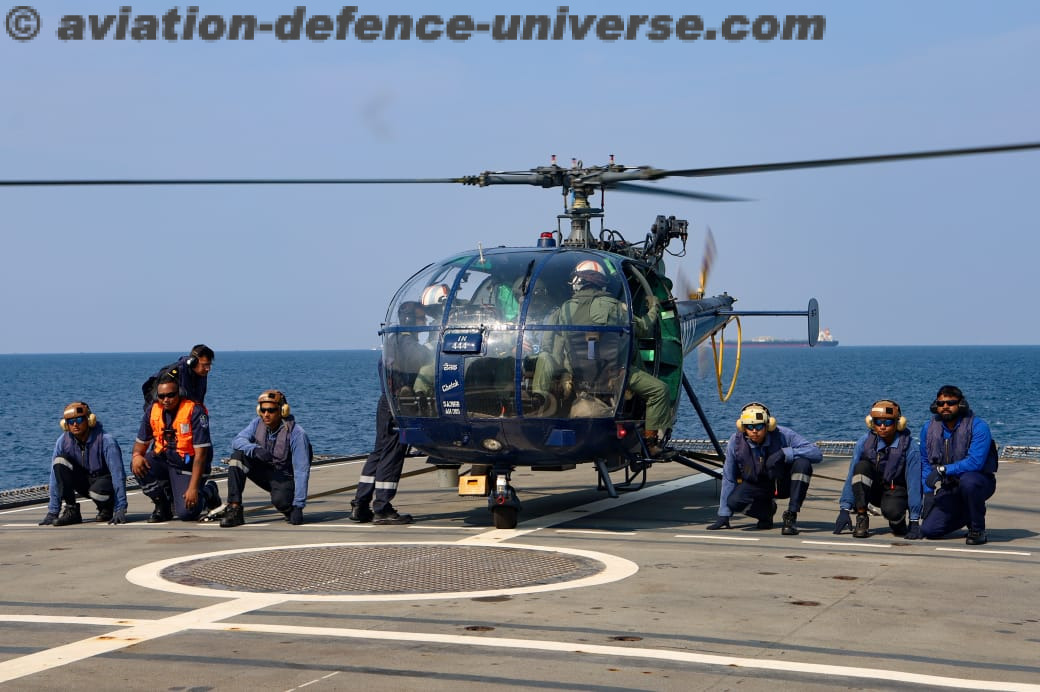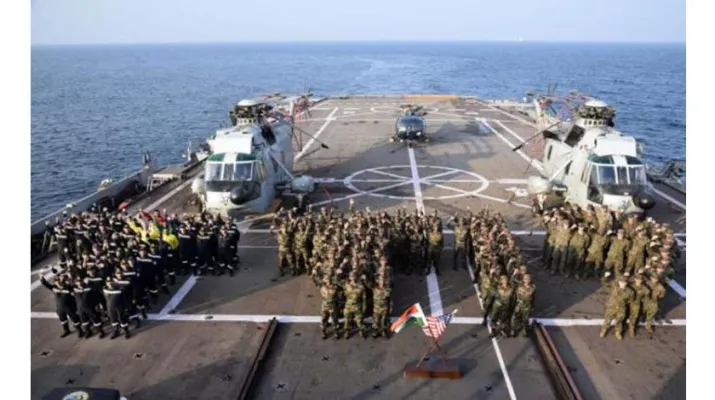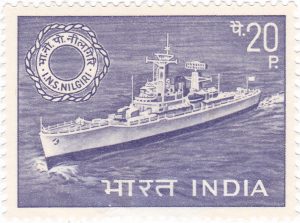
- The journey of a spanner
By Air Marshal PV Athawale PVSM, AVSM, VSM (Retd)
Secunderabad, Hyderabad. 04 May 2020. After retirement, I have often said – “Given any number of choices in my next janam, I would never trade my Air Force life for anything else!” Since the days of AVM Harjinder Singh, when mechanical engineering dominated engineering functions, engineers in the IAF have been called Spanners. I have had an exciting spanner’s life in and because of the Indian Air Force. And I reckoned that would make a story. Besides, I never miss the opportunity to remember the inspiring men that made up my story in no small measure. So here’s the story.
Long ago, when I was a student of M Tech at IIT Kharagpur, a fellow student at the adjacent terminal in the Computer Centre remarked, “Oh, you aren’t a soldier – you are a ground engineer in the IAF”. I clarified that I was very much a soldier in uniform, that I was an Aeronautical Engineering Officer in the Air Force and not a Ground Engineer. But he remained unconvinced. “How does that matter? Isn’t your function the same as that of a Ground Engineer in Air India?” he asked.
I had to tell him that I had done fleet maintenance in a Fighter Squadron before moving to a multi engine transport squadron as aircrew. There I had flown a thousand hours while also performing the Squadron Engineering Officer’s role. At this stage, I was moved from Aircraft to Systems. After a course in Microwave Communication Systems Engineering I was posted to a Tropo Scatter Hub Centre. After that I was involved with flight tests at Aircraft &Systems Testing Establishment before coming to IIT Kharagpur. I told him that I had declined my Professor’s offer to guide me through a PhD and after my M Tech in Computer Science, I looked forward to operational systems’ software development in the IAF.
The fellow student nodded in response. But the unsaid was obvious on his face, “Aisa to nahin hota hai Bhai!”
In the 1980s, Computer Science was a new and exciting field. There was much hands-on work required before getting on to managerial roles – so much that I gave up the temptation of getting the glamorous Staff College stamp and chose not to take the exam. This was well worth the bargain because a few years of buckling down and doing the hard work enabled me to set up a networked Op-cum-Logistics Information System that linked Op bases of Western Air Command to their HQs. This was a first in the IAF.
I was to have one of my most satisfying experiences in the AF in the setting up of the Software Development Institute (SDI).I will never know how a reticent young Wing Commander like me, always shy of the spotlight, was chosen for this ambitious, first-of-its-kind institute for the AF. INAS Integration Organisation (IIO), a major project organisation, had carried out pioneering work on Navigation and Weapon Attack software and System integration for the Jaguar fleet. IIO was on its way to project closure with few experts left behind. We were to learn from whatever was left of IIO, take over and then venture into simulation software besides getting ready for avionics upgrades of other fleets as well. Interestingly, many senior officers didn’t believe in any future for SDI especially as it was led by only a Wg Cdr. It turned out that anyone with adequate influence got his posting cancelled. And, instead of eleven officers, SDI began with only three on 27th of January 1992. Often, success needs the belief of not many but the one man – for SDI, that man was Air Cmde Philip Rajkumar (later Air Mshl), the ASTE Commandant. Even though SDI was under ACAS (Plans) and not a part of ASTE, he nurtured someone else’s fledgling and took it affectionately under his wings. He gave us the Software Support Centre lab of ASTE and told us that we were his boys as long as we were inside ASTE. I can’t forget the day when he called me to his office and gave me the keys to the gates of 8 Acres of ASTE land saying, “That’s where you’ll make SDI.”
For nearly four years, I was a Commanding Officer on Bajaj scooter. I can’t forget the day when, with Sqn Ldr Venkatachalam as my pillion, I rode my Bajaj to HQ Training Command to pick up the first set of file covers and stationery. Our first humble accomplishment was the Jaguar Mission Planning System development and delivery to the squadrons. To test the software, Gp Capt Ajit Agtey, the CO Flight Test Squadron at ASTE asked me to fly the Jaguar trainer with him. As we were stepping on the ladders, he literally threw the map at me saying “Pramod, you do a little map reading on the way; I have your Mission Plan anyway” – his method of showing trust!
We would lose the patronage of Air Cmde Rajkumar when he moved out of ASTE. By then AVM S Krishnaswamy (later the Air Chief) would take over as ACAS (Plans). I got a call from AVM Krishnaswamy on day one of his taking over – Command & Control would be direct from the ACAS (Plans). Hereon, under his close supervision, SDI was inspired, tasked, and supported to perform with a ‘junoon’ that it had not known before. Since then, SDI has grown from strength to strength. Today, in its third decade, it is the repository of all avionics software in the IAF.
After SDI, I was assigned to take on the role of Project Director of Control & Reporting Centre Development Group (CRCDG). Those days, various low level radars with limited ranges operated manually. On egress of a target, the CRC handed over controls to the adjacent radar with a physical gap in between. The Low-level Radar Networking Group (LRNG) project team had done substantial work before I took over. The project had to provide for controlled interceptions with a composite picture of 6 to 8 radars. A digital network was established using SATCOM terminals with 4.8/ 9.6 kbps bandwidth to connect the CRC with its radars. Software was written to synthesize a composite radar picture and provide for controlled interceptions from a single control centre called Auto CRC. By the time we fine-tuned the software to get the flight tests completed, the hardware was nearly obsolescent. However, learning from this experience, the team would go on to accomplish a far bigger project – IACCS.
As an Air Cmde, one would be typically sent to command a Base Repair Depot; Instead, I was assigned a huge project for Integrated Air Command & Control System (IACCS). There was a need to integrate all military and civil, high, medium and low level radars in the country into a comprehensive picture for air defence. By this time, massive bandwidth on FOC was no issue and we could conceptualise a far more elegant system. All info was made available at each Command & Control centre irrespective of its geographical location. Redundancy was thus built-in because degradation of a centre could no more bring down its network as another centre would take on its role. I had the satisfaction of completing one centre before moving out. The project team did wonders thereafter to improve and upscale the system.
As a prerequisite to wider operationalisation of IACCS, the IAF needed a high bandwidth FOC network. Just then for Mobile phone operators the DOT required bandwidth which was used by our Tropo Communication network. Therefore, they proposed to give us a network in exchange. As ACAS (Sigs & IT), I was assigned to lead the implementation of this vital project. We abandoned our smaller but approved network acquisition to take on this challenge of conceptualising an Air Force wide network. The task was highly demanding because of the new technology that was never configured earlier. The network design challenge was made lighter by my younger colleagues who were brilliant engineers and current with the latest in technology.
At the turn of the millennium, the Directorate of Standardisation required 13 specialists to deal with Y2K issues. Air Force took one vacancy as the major share was taken by the Army and the Navy. There was hardly any software work, but, as Oi/c Cell, I had great exposure to the usually neglected standardisation in defence. I was also assigned an additional task of starting an Institute of Standards Training at my Cell in Pune – another first, giving me incredible experience.
In between, I got back to a major Fighter Base as its Chief Engineering Officer and had my credentials as a spanner re-endorsed, before I moved to senior ranks. And eventually, I had to get back to base – Maintenance Command – the final destination for a spanner.
My story has been long and zigzag – fighters to transports, aircrew duties, aircraft & systems testing, database software, real-time software, back to fighters after a gap of 25 years, standardisation, projects and further projects – to culminate in the role of AOC-in-C Maintenance Command.
But for great bosses who trusted and cared, it wouldn’t have been possible for me to switch between roles. In addition to those who I mentioned earlier, there were innumerable others who made the journey delightful.
Almost 30 years after that day at the Computer Science lab in IIT Kharagpur, I was at IIT Roorkee as Advisor to the Director. I was an Air Force veteran by then and it was my second stint at Roorkee, my alma mater from my BE days. During an interaction with students of management, I had two other alumni with me on the dais, both with successful careers in industry. The students wouldn’t have expected much industry insight from me, the final speaker, a fauji. I asked them – “Does anyone know of an Indian industry bigger than the IAF?” I had to break the ensuing silence by saying, “I know of one, and that is the Indian Army. However, when it comes to sophistication and size together, the Indian Air Force would be one of its kind.” I had the full attention of a hundred students for the rest of my talk. It was evident that they were impressed to find out about the hi-tech side of the Air Force and the exciting variety of functions performed by the Engineer Officers. Some were even disappointed to have missed the chance of joining the IAF in their early years after graduation.
Given the tremendous amount of specialisation in different fields of engineering within IAF, it is a wonder that the single specimen called Aeronautical Engineer (AE) Officer handles them all, not to mention the associated logistics. The unique nature of comprehensive AE functions within Air Force is not quite well understood even by the officers from sister services. It is therefore natural that the civilian will have confused views.
Oftentimes I remember that questioning fellow at IIT Kharagpur and smile. “Air Force mein aisa hi hota hai Bhai!”
Air Marshal PV Athawale PVSM, AVSM, VSM (Retd), former AOC-in-C of Maintenance Command IAF, is an alumnus of IITs Roorkee and Kharagpur.The views in the article are solely his. He can be contacted at editor.adu@gmail.com




















































































































